- Home
- Clive Cussler
Polar Shift nf-6 Page 8
Polar Shift nf-6 Read online
Page 8
"Anything interesting turn up?" Zavala said.
Austin made a face. "No mermaids, if that's what you mean. Lots of flat ooze with hard sediment mixed in here and there, boulders, dips and depressions, school fish and sea clutter. No sign of our ship-or any ship, for that matter."
Adler shook his head in frustration. "You wouldn't think it would be so damned difficult with all these electronic gizmos to find a vessel that's longer than two football fields put together."
"It's a big ocean. But if any ship can find the Belle, it's the Throckmorton" Austin said in reassurance.
"Kurt's right. The instrumentation on this ship can tell you the color of a tube worm's eyes at a thousand fathoms," Zavala added.
Adler chuckled. "Deep-ocean biology isn't my area of expertise, but I wasn't aware those remarkable creatures had eyes."
"Joe is exaggerating, but only a little bit," Austin said with a smile. "The stuff available on the Throckmorton makes a strong case for those who argue that humans can explore the deep ocean without getting their feet wet. Instead of being crammed into a submersible vehicle, here we are sipping coffee while the side-scan fish does all the work for us."
"And what do you think, Kurt?"
Austin pondered the question. "There is no doubt that someone like Joe can build an underwater robot vehicle that can be programmed to do everything but bring you your newspaper and slippers."
A brilliant mechanic as well as engineer, Zavala had designed and directed the construction of numerous underwater vehicles, manned and unmanned, for NUMA.
"Funny you should mention that," Joe said. "I'm working on a design that will do all that and mix a damned good margarita too."
"Joe makes my point." Austin gestured at the screens lining the walls of the survey center. "But what's missing in the comfortable confines of this room is the hunger for the one quality that will keep the human race from atrophying like an unused limb. Adventure."
Adler smiled with pleasure at having made the right decision in going to NUMA for help. Austin and Zavala were obviously sharp-minded scientists, knowledgeable in arcane areas of ocean research. But with their athletic bearing, quick humor and good-natured camaraderie the two NUMA men seemed like throwbacks. They were more like eighteenth-century swashbucklers than the seagoing academics he was used to, with their fussy intensity and taciturn personalities. He lifted his coffee mug in a toast.
"Here's to adventure," he said.
The others raised their mugs. "Maybe it's time we had a wave scientist on the Special Assignments Team," Austin said.
An urgent buzzing from the sonar monitor cut short Adler's laughter.
Austin set his coffee aside and stepped over to the sonar screen. He watched the display for a few seconds. His lips widened in a smile and he turned to the professor. "You said earlier that you'd like to assess the damage to the Southern Belle before you tell us about the theories you've been toying with."
"Yes, that's right," Adler said. "I'm hopeful that I can learn why the Belle went down."
Austin swiveled the screen so that the professor could see the spectral image of a ship lying on the ocean bottom five hundred feet below.
"You're about to get your chance."
The sea had wasted no time taking over ownership of the Southern Belle.
The ship caught in the powerful spotlights of the remote-operated vehicle was no longer the magnificent vessel that had once plowed across the ocean like a moving island. Its blue hull was covered with a greenish gray growth that gave the ship a shaggy-dog appearance, as if it had grown fur. Microscopic organisms had taken up residence in the seaweed, attracting schools of fish that nuzzled for food in the nooks and crannies of what had become a huge incubator for marine life.
The ROPOS ROV had been launched from the Throckmorton's A-frame stern soon after Austin had notified the bridge that the sonar scan had picked up the ship's image. The vehicle was around six feet long, three feet wide and high, and shaped like a seagoing refrigerator. Despite its boxy shape, the ROV's design had gone far beyond the "dope on a rope" function of the earlier remote vehicles. It was a moving ocean laboratory capable of a variety of scientific functions.
The ROV carried two video cameras, twin manipulators, sampling tools, sonar and digital data channels. The vehicle was attached to the ship by a fiber-optic tether that provided communication and the transmission of live video and other data. Driven by a forty-horsepower electric motor, the ROV had rapidly descended the nearly five hundred feet to where the ship lay on the bottom in an upright position.
Joe Zavala sat at the control console piloting the boxy undersea robot with a joystick. Zavala was an experienced pilot who had logged hundreds of hours in helicopters, small jet and turboprop aircraft, but controlling a moving object hundreds of feet away required the deft hand of a teenage video game addict on the controls.
Keeping an eye on the video picture in front of him, Zavala guided the ROV as if he were sitting inside it. He used a firm yet gentle hand on the joystick, giving the vehicle subtle commands to compensate for shifts in current. With each move of the joystick, he had to be careful that the ROV didn't get tangled in its umbilical.
The mood was somber in the crowded remote sensing center. Crew and scientists had squeezed into the room after word of the Southern Belle's discovery had spread throughout the ship. The silent spectators gazed at the ghostly images of the dead ship like mourners at a funeral bier.
Reality had set in after the initial excitement of the ship's discovery. Those who follow the sea know that the solid deck under their feet rests on an undulating liquid foundation of ocean water that is as treacherous as it is beautiful. Everyone on the Throckmorton knew that the sunken ship had become a tomb for its crew. All were aware that they could suffer the same fate. There was no sign of the men who had gone down with the Southern Belle, but it was impossible not to contemplate the last terrifying moments of the cargo ship's doomed crew.
Totally focused on his task, Zavala brought the ROV down to deck level and ran it over the deck from bow to stern. Normally, he would have to be careful that the vehicle didn't get tangled in the masts and radio antennae, but the Belle's deck was as level as a billiard table. The camera picked up ragged metal stubs where the cranes and booms used to handle cargo containers had been snapped off like toothpicks.
As the ROV soared over the aft end of the ship, its lights picked out a large rectangular opening in the deck.
Zavala murmured an exclamation in Spanish. Then he said, "The deckhouse is gone."
Austin was leaning over Zavala's shoulder. "Try searching the area immediately around the ship," he suggested.
Zavala worked the joystick, and the vehicle rose higher above the deck. It moved around the ship in an expanding spiral, but there was no sign of the deckhouse.
Professor Adler had been watching the show in stony silence. He tapped Austin lightly on the arm and led him to the far end of the room, away from the crowd clustered around the ROV monitor.
"I think it's time we talked," the professor whispered.
Austin nodded and returned to the control console. He told Joe he would be in the ship's recreation room, then he and the professor left the survey center. With the rest of the ship's complement working or watching the pictures of the Belle, they had the rec room to themselves. It was a comfortable space, with leather furniture, a television set and DVD, movie cabinet, pool table and Ping-Pong table, some board games and a computer.
Austin and Adler settled into a couple of chairs. "Well," Adler said, "what do you think?"
"About the Belle? You don't have to be Sherlock Holmes to deduce why it went to the bottom. The deckhouse was blasted off."
"We have the satellite pictures showing wave activity. There's no doubt in my mind that she was hit by one or more killer waves far bigger than anything we've seen before."
"Which brings us back to your theories. You were reluctant earlier to talk about them. Has finding the ship chang
ed your mind?"
"I'm afraid my theories are out of the ordinary."
Austin leaned back in his chair and folded his hands behind his head. "I've learned that nothing is ordinary when it comes to the ocean."
"I've hesitated up to now because I didn't want to be labeled a humbug. It took years for the scientific community to accept freak waves as fact. My colleagues would rip me to shreds if they knew what I was thinking."
"We couldn't let that happen," Austin said reassuringly. "I'll respect your confidence."
The professor nodded. "When the empirical evidence of these waves became too strong to deny, the European Union launched two high-resolution-image satellites. The project was called Max Wave. The goal was to see if these waves existed, and examine how they might influence ship and offshore platform design. The European Space Agency satellites would produce 'imagettes,' covering an area just ten by five kilometers. Over a three-week period, the satellites identified more than ten freak waves all higher than eighty-two feet."
Adler went over and sat in front of the computer. He tapped the keyboard until an image of the globe appeared on the screen. The Atlantic Ocean was speckled with annotated wave symbols. "I'm using the census data from Wave Atlas. Each symbol denotes the location of a giant wave, its height and the date it was formed. As you can see, there has been an increase in wave activities over the last thirteen months. And in the size of these monsters as well."
Austin pulled up a chair next to the professor. He scanned the wavy symbols. Each symbol was annotated with the height and date of the event. The waves were randomly scattered around the world, except for several clusters.
"Do you notice anything unusual?"
"These four circular patterns are each spaced the same distance apart in the Atlantic, including the area we're in now. Two in the North Atlantic. Two in the South. What about the Pacific?"
"I'm glad you asked me that." He manipulated the globe until the Pacific Ocean came into view.
Austin whistled. "Four similar clusters. Strange."
"That's what struck me as odd too." A faint smile crossed his lips. "I've measured the clusters and found that they are exactly equidistant in each ocean."
"What are you saying, Professor?"
"That there appears to be a conscious plan at work here. These waves are the work either of man or God."
Austin pondered the implications of the professor's statement. "There is a third possibility," he said after a moment. "Man acting as God."
Arching a bushy eyebrow, Adler said, "That's out of the question, of course."
Austin smiled. "Not necessarily. Mankind has a history of trying to control the elements."
"Controlling the sea is another matter."
"I agree, although there have been crude but effective attempts. Dikes and storm barriers go back hundreds of years."
"I was a consultant on the Venice tidal gate project, so I know what you mean. Stopping the ocean involves a relatively simple concept. It's the engineering that becomes the challenge. The creation of giant waves would be far more difficult."
"But not impossible," Austin said.
"No, not impossible."
"Have you given any thought to means? Something like huge underwater explosions?"
"Highly unlikely," Adler said with a shake of his head. "You'd need an explosion of a nuclear level, and it would be detected. Any other ideas?"
"Not offhand," Austin said. "But it's definitely something that NUMA should investigate."
"You have no idea how happy I am to hear you say that," Adler said with relief. "I thought I was going crazy."
A thought occurred to Austin. "Joe wondered if the Trouts' work might shed some light on this mystery," he said.
"Sure, I remember. You mentioned that a couple of your NUMA colleagues are working on another research project in this area."
Austin nodded. "South of our position. They're with a group of scientists on the NOAA ship Benjamin Franklin, looking into the biological implications of the giant eddies in the Atlantic Ocean."
"As I said, I wouldn't rule anything out. It's certainly worth looking into."
"We can talk to them about their findings when we get back to port."
"Why wait?" Adler said.
Adler's fingers played over the keys and a Web site popped up on the screen, followed by a satellite image showing the mid-Atlantic coast. "The ocean satellite taking this picture can pick up an object as small as a sardine."
"Amazing," Austin said, leaning close to the screen.
Adler clicked the computer mouse. "Now we're seeing ocean water temperature. That wavy band of reddish brown is the Gulf Stream. The blue area is cold water, and those circular blobs in tan are warm water eddies. I'll zoom in on our ship."
He worked the computer mouse so that one of the tan-colored swirls filled the screen. The outlines of two vessels were now visible near the whorl.
"That blip is the Throckmorton. The other one must be your NOAA ship. Wow! This stuff still amazes me."
Austin leaned over Adler's shoulder. "What's that smaller circle in the southeast quadrant?"
Adler enlarged the image. "It's a separate eddy. Acting real funny. The numbers in the little boxes show water movement speed and level. The level within the swirl seems to be dropping while the water is moving at increasing speed." Adler's eyes were glued to the screen. The swirl, now almost a perfect circle, continued to grow. "Migod," he said.
"What's the problem?"
The professor tapped the screen. "We seem to be looking at the birth of a gigantic whirlpool."
7
Gamay Morgan-Trout carefully lowered the Van Dorn sampler over the port rail of the NOAA survey ship and watched the nine-liter plastic cylinder sink beneath the foam-flecked waves. She played out the thin connecting cable as the sampler plunged hundreds of feet to the ocean bottom.
After the bottle filled with water and automatically sealed, she began to winch it back on board with the help of her husband. Paul Trout hauled the dripping bottle the last few feet from the water, detached the sampler from the cable and held it to the light, as if he were testing the color of a fine glass of wine.
Trout had a twinkle in his hazel eyes. "This is absurd," he said.
"What's absurd?"
"Consider what we're doing."
Still puzzled, Gamay said, "Okay, we've just tossed a fancy bottle over the side and hauled it up filled with seawater."
"Thank you for making my point. Look around at this ship. The Benjamin Franklin is loaded with cutting-edge research gear. We've got stuff like specialized echo sounders, multibeam and side-scan sonar and the latest in computer hardware and software. But we're no different from the ancient mariners who smeared wax on their sounding lead to check out the composition of the ocean bottom."
Gamay smiled. "And now we're about to collect plankton using an old-fashioned fisherman's net. I draw the line when it comes to transport. No rowboat. How's the Zodiac coming?"
"Ready to go," Trout said. He read the surface of the sea with an experienced eye. "Wind's freshening. Could get choppy. We'll have to stay sharp." He pronounced it "shaap," betraying his New England roots.
Gamay glanced at the whitecaps starting to dot the grayish blue water. "We might not be able to go out again for days if we wait."
"My thoughts exactly." He handed her the Van Dorn sampler. "I'll meet you at the Zodiac davit."
Gamay delivered the sampler to the wet lab. The water sample would be analyzed for trace metals and organisms. She went to her cabin, pulled a hooded, foul-weather suit on over her jeans, Icelandic wool sweater and chamois shirt, and tucked her long, dark red hair under a multicolored "Friends of the Hunley" baseball cap. Slipping into her personal flotation device, she went out to the stern deck.
Trout was waiting next to the davits that held the twenty-three-foot-long, rigid inflatable boat. He was dressed impeccably as usual. Under a full suit of yellow commercial-grade, foul-weather gear, he
wore designer jeans specially tailored to fit his six-foot-eight frame and a navy sweater made of cashmere wool. One of the colorful bow ties to which Trout was addicted adorned the button-down collar of his Brooks Brothers oxford-weave blue shirt. As a counterpoint to his casual elegance, he wore scuffed work boots, a holdover from his days at the Woods Hole Oceanographic Institution, where functional footwear was de rigueur. He wore a navy wool cap to protect his head.
The Trouts climbed aboard the rigid inflatable boat and the Zodiac was lowered into the sea. Paul started the Volvo Penta diesel inboard/outboard engine as Gamay cast off the tether line. They stood side by side at the steering console with legs braced in a charioteer's pose, knees bent to absorb the shock of the flat-bottomed hull slapping the waves.
The rugged inflatable craft planed over the seas like a playful dolphin. Trout steered toward a Day-Glo orange sphere that was bobbing in the water about a quarter mile from the ship. They had set the buoy earlier in the day to provide a reference point for the phytoplankton survey.
It was not the most hospitable work environment. Glowering clouds were moving in from the east, and the horizon line was barely visible where gray sea met gray water. The easterly wind had come up a few knots. The thick cloud layer blocking the sunlight was starting to spit light rain.
But as they prepared for the survey, Paul and Gamay wore that particular expression of bliss people born to the sea have when they are in their natural element. Paul had climbed aboard a fishing boat with his fisherman father as soon as he could walk. He had fished commercially out of the Cape Cod village of Woods Hole until he went off to college.
Gamay was unfazed by the gloomy weather, although her background was somewhat different from Trout's. Born in Racine, Wisconsin, she had spent many of her younger years sailing the sometimes cantankerous waters of the Great Lakes with her father, a successful developer and yachtsman.

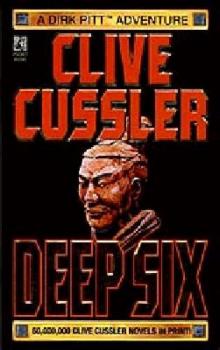 Deep Six
Deep Six Odessa Sea
Odessa Sea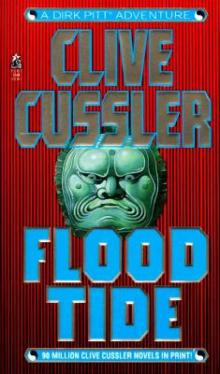 Flood Tide
Flood Tide Valhalla Rising
Valhalla Rising Thriller 2
Thriller 2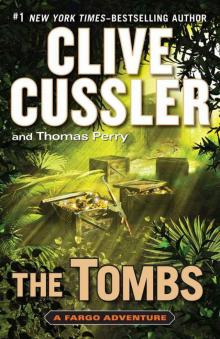 The Tombs
The Tombs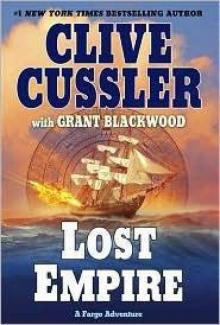 Lost Empire
Lost Empire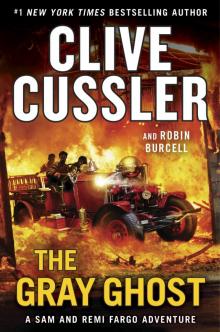 The Gray Ghost
The Gray Ghost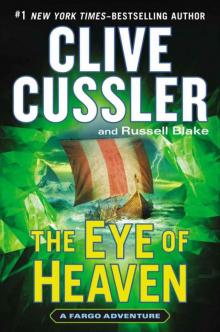 The Eye of Heaven
The Eye of Heaven Polar Shift
Polar Shift The Kingdom
The Kingdom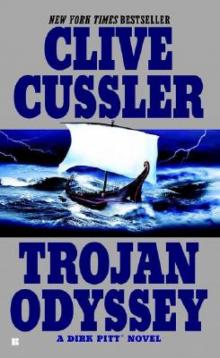 Trojan Odyssey
Trojan Odyssey Shadow Tyrants
Shadow Tyrants Nighthawk
Nighthawk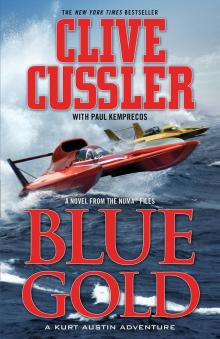 Blue Gold
Blue Gold Serpent
Serpent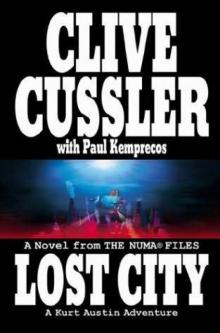 Lost City
Lost City The Gangster
The Gangster White Death
White Death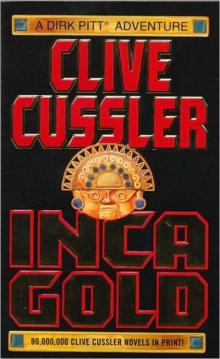 Inca Gold
Inca Gold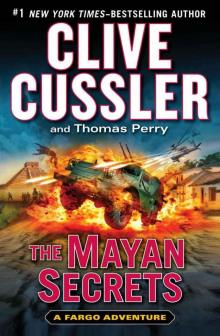 The Mayan Secrets
The Mayan Secrets The Pharaoh's Secret
The Pharaoh's Secret The Emperor's Revenge
The Emperor's Revenge Corsair
Corsair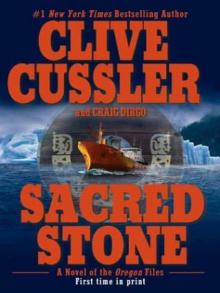 Sacred Stone
Sacred Stone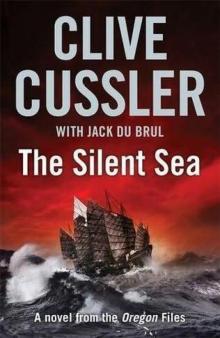 The Silent Sea
The Silent Sea The Rising Sea
The Rising Sea Black Wind
Black Wind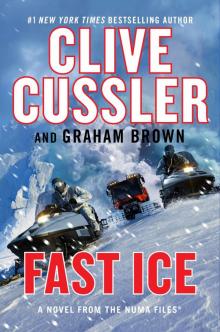 Fast Ice
Fast Ice Ghost Ship
Ghost Ship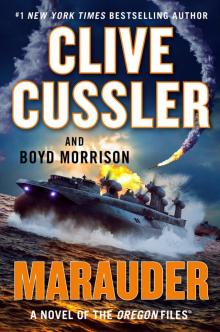 Marauder
Marauder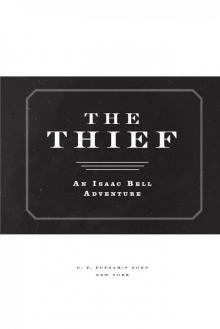 The Thief
The Thief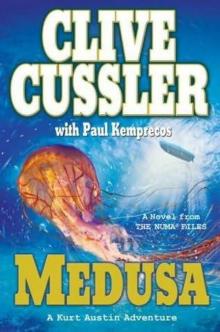 Medusa
Medusa Typhoon Fury
Typhoon Fury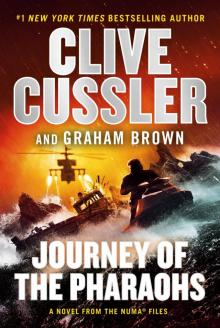 Journey of the Pharaohs
Journey of the Pharaohs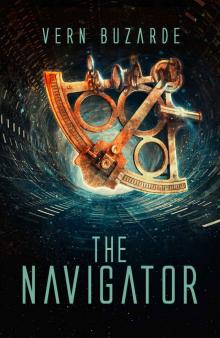 The Navigator
The Navigator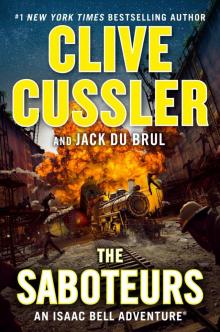 The Saboteurs
The Saboteurs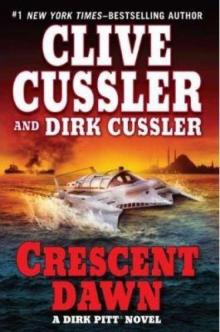 Crescent Dawn
Crescent Dawn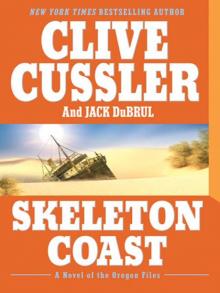 Skeleton Coast
Skeleton Coast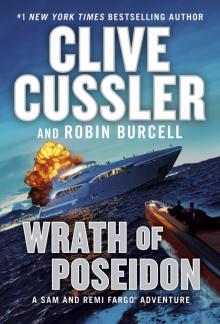 Wrath of Poseidon
Wrath of Poseidon The Mediterranean Caper
The Mediterranean Caper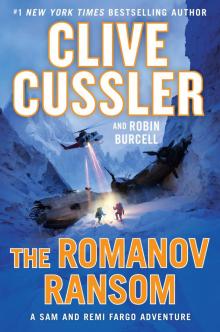 The Romanov Ransom
The Romanov Ransom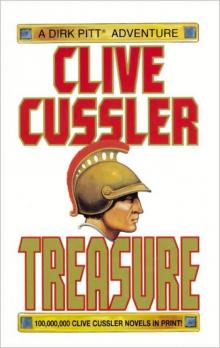 Treasure
Treasure The Race
The Race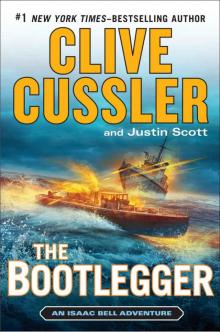 The Bootlegger
The Bootlegger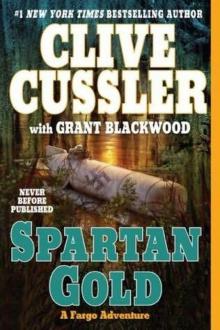 Spartan Gold
Spartan Gold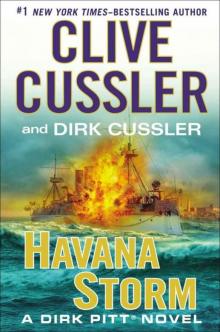 Havana Storm
Havana Storm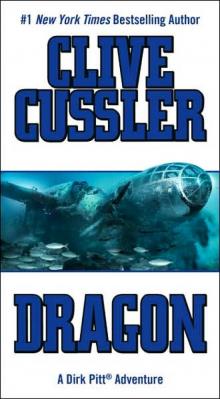 Dragon
Dragon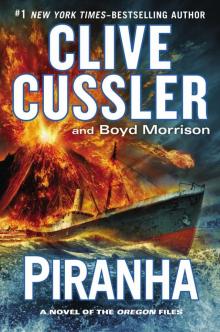 Piranha
Piranha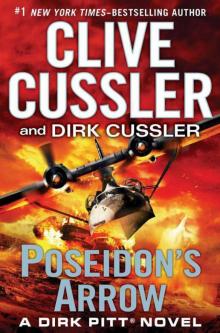 Poseidon's Arrow
Poseidon's Arrow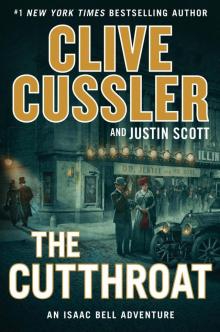 The Cutthroat
The Cutthroat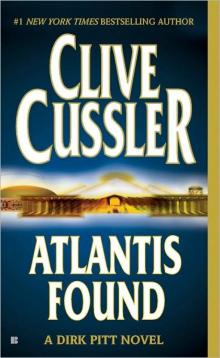 Atlantis Found
Atlantis Found The Jungle
The Jungle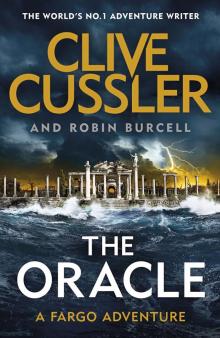 The Oracle
The Oracle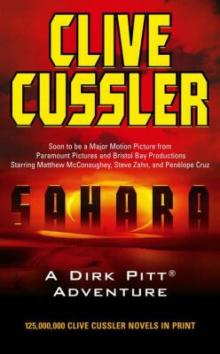 Treasure / Dragon / Sahara: Clive Cussler Gift Set
Treasure / Dragon / Sahara: Clive Cussler Gift Set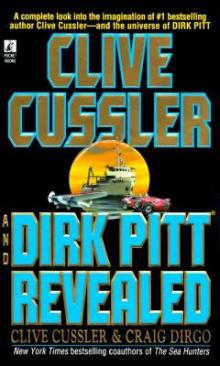 Clive Cussler and Dirk Pitt Revealed
Clive Cussler and Dirk Pitt Revealed The Sea Hunters
The Sea Hunters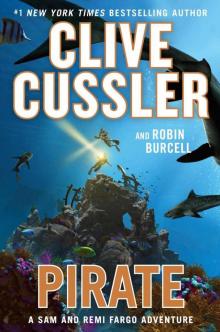 Pirate
Pirate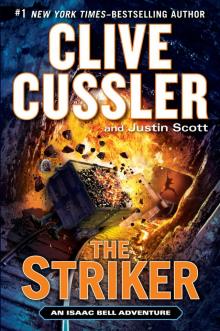 The Striker
The Striker Plague Ship
Plague Ship The Wrecker
The Wrecker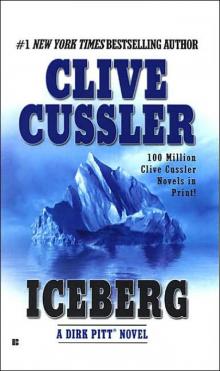 Iceberg
Iceberg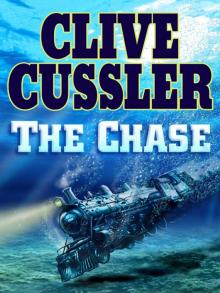 The Chase
The Chase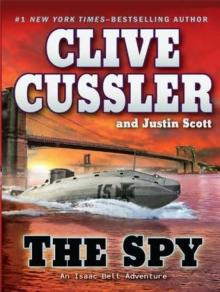 The Spy
The Spy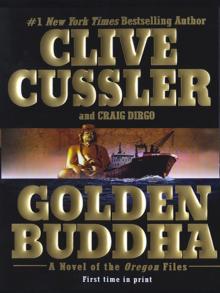 Golden Buddha
Golden Buddha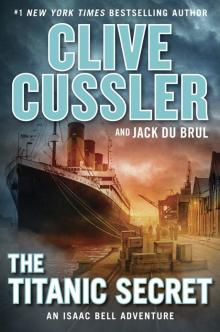 The Titanic Secret
The Titanic Secret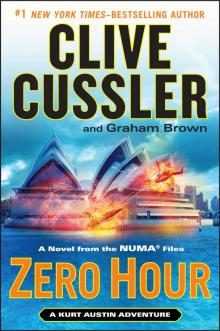 Zero Hour
Zero Hour Fire Ice
Fire Ice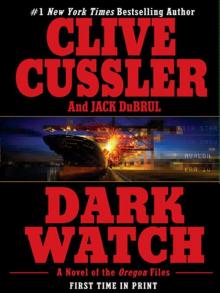 Dark Watch
Dark Watch The Storm
The Storm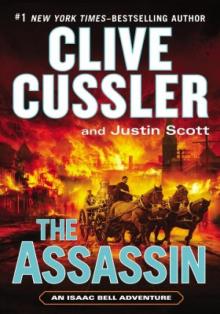 The Assassin
The Assassin Vixen 03
Vixen 03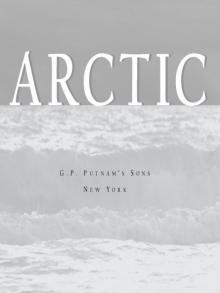 Arctic Drift
Arctic Drift Night Probe!
Night Probe! Cyclops
Cyclops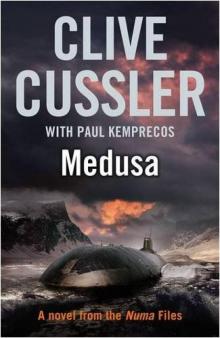 Medusa nf-8
Medusa nf-8 Shock Wave dp-13
Shock Wave dp-13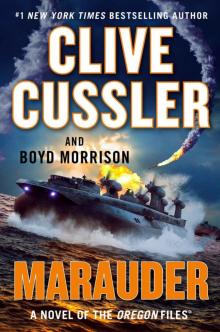 Marauder (The Oregon Files)
Marauder (The Oregon Files)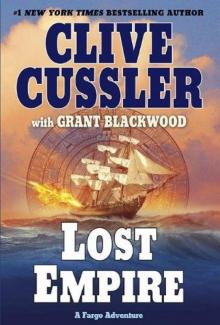 Lost Empire fa-2
Lost Empire fa-2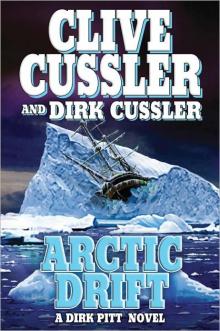 Arctic Drift dp-20
Arctic Drift dp-20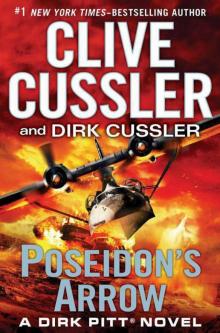 Dirk Pitt 22 - Poseidon's Arrow
Dirk Pitt 22 - Poseidon's Arrow Treasure of Khan dp-19
Treasure of Khan dp-19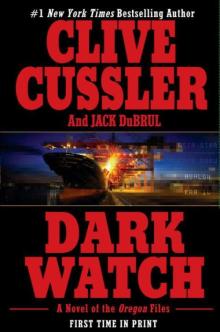 Dark Watch of-3
Dark Watch of-3 Devil's Gate
Devil's Gate The Sea Hunters II: More True Adventures with Famous Shipwrecks
The Sea Hunters II: More True Adventures with Famous Shipwrecks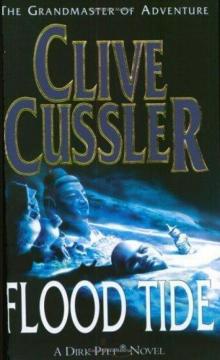 Flood Tide dp-14
Flood Tide dp-14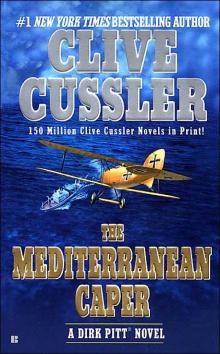 The Mediterranean Caper dp-2
The Mediterranean Caper dp-2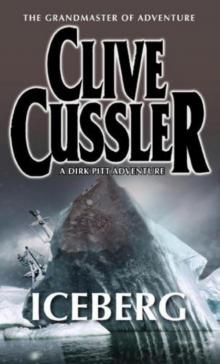 Iceberg dp-3
Iceberg dp-3 Sahara dpa-11
Sahara dpa-11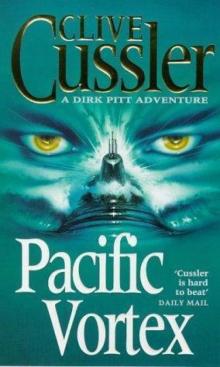 Pacific Vortex! dp-1
Pacific Vortex! dp-1 Deep Six dp-7
Deep Six dp-7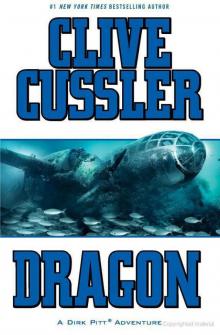 Dragon dp-10
Dragon dp-10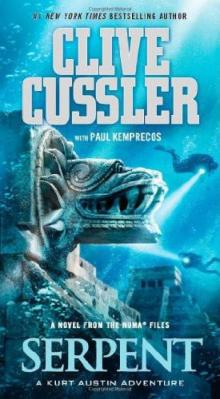 Serpent nf-1
Serpent nf-1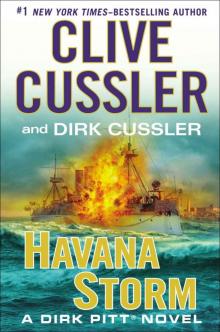 Havana Storm (Dirk Pitt Adventure)
Havana Storm (Dirk Pitt Adventure)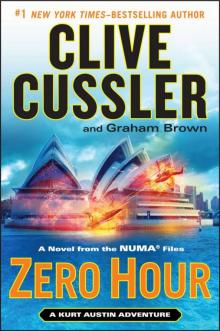 Zero Hour nf-11
Zero Hour nf-11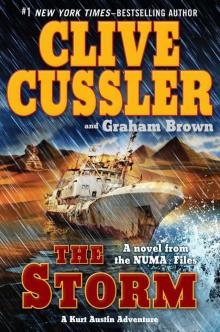 The Storm nf-10
The Storm nf-10 The Thief ib-5
The Thief ib-5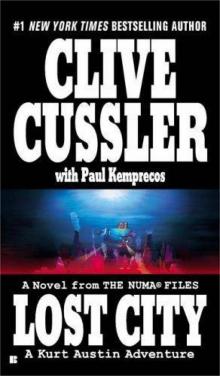 Lost City nf-5
Lost City nf-5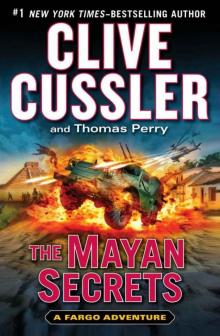 The Mayan Secrets fa-5
The Mayan Secrets fa-5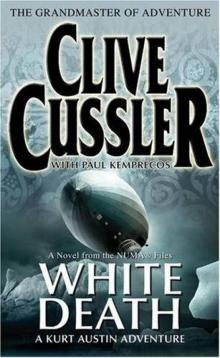 White Death nf-4
White Death nf-4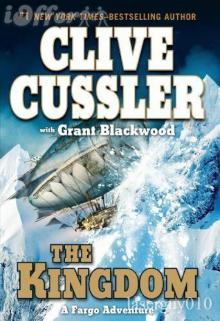 The Kingdom fa-3
The Kingdom fa-3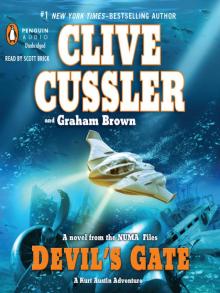 Devil's Gate nf-9
Devil's Gate nf-9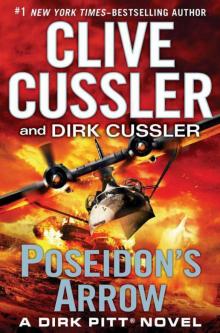 Poseidon's Arrow dp-22
Poseidon's Arrow dp-22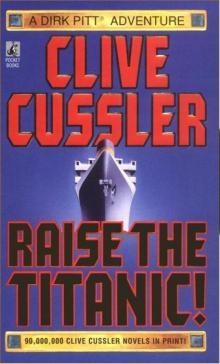 Raise the Titanic dp-4
Raise the Titanic dp-4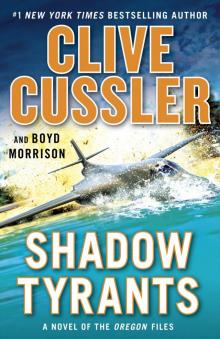 Shadow Tyrants--Clive Cussler
Shadow Tyrants--Clive Cussler Sacred Stone of-2
Sacred Stone of-2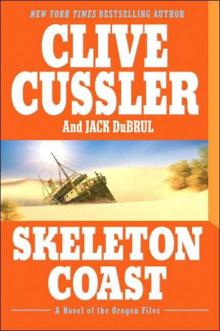 Skeleton Coast tof-4
Skeleton Coast tof-4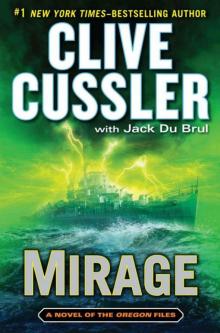 Mirage tof-9
Mirage tof-9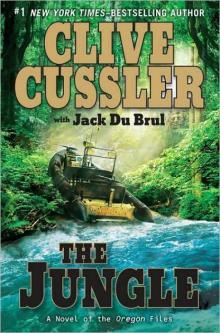 The Jungle of-8
The Jungle of-8 The Emperor's Revenge (The Oregon Files)
The Emperor's Revenge (The Oregon Files)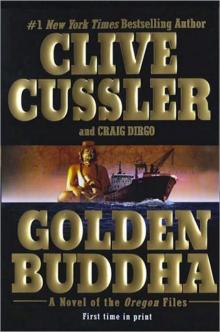 Golden Buddha of-1
Golden Buddha of-1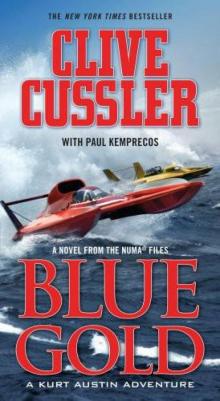 Blue & Gold
Blue & Gold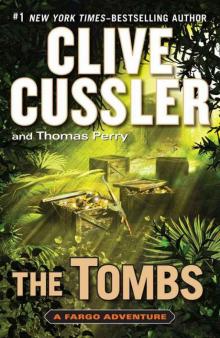 The Tombs fa-4
The Tombs fa-4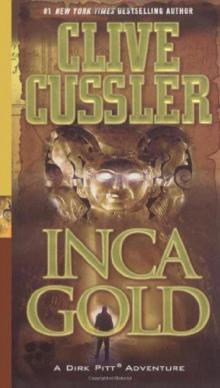 Inca Gold dp-12
Inca Gold dp-12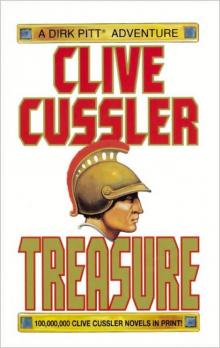 Treasure dp-9
Treasure dp-9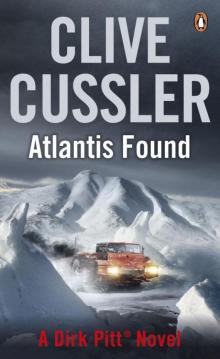 Atlantis Found dp-15
Atlantis Found dp-15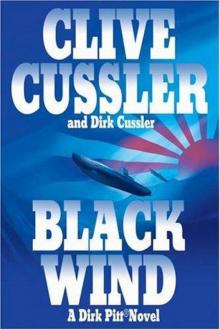 Black Wind dp-18
Black Wind dp-18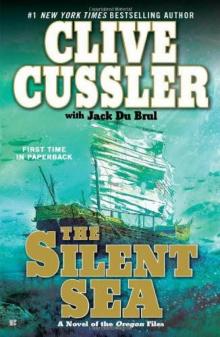 the Silent Sea (2010) tof-7
the Silent Sea (2010) tof-7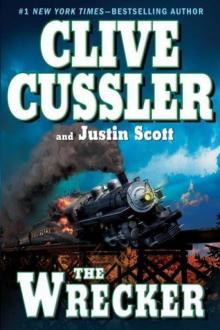 The Wrecker ib-2
The Wrecker ib-2 Fire Ice nf-3
Fire Ice nf-3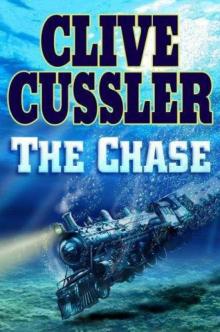 The Chase ib-1
The Chase ib-1 Sahara
Sahara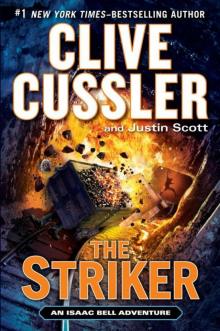 The Striker ib-6
The Striker ib-6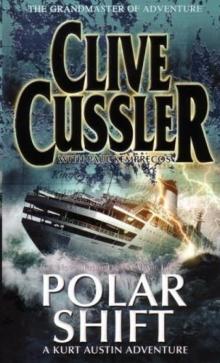 Polar Shift nf-6
Polar Shift nf-6 The Race ib-4
The Race ib-4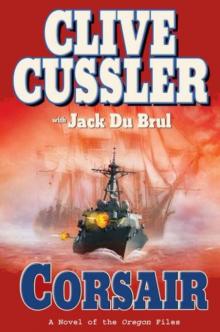 Corsair of-6
Corsair of-6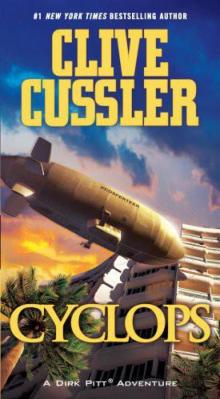 Cyclops dp-8
Cyclops dp-8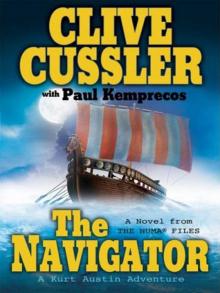 The Navigator nf-7
The Navigator nf-7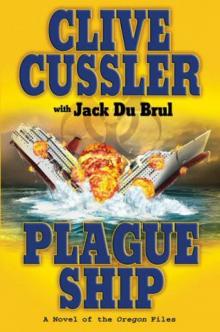 Plague Ship tof-5
Plague Ship tof-5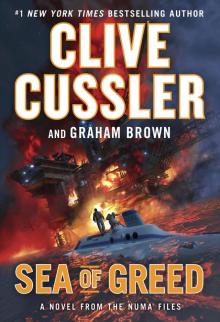 Sea of Greed
Sea of Greed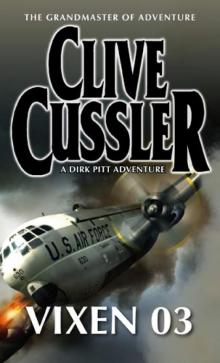 Vixen 03 dp-5
Vixen 03 dp-5 Thriller 2: Stories You Just Can't Put Down
Thriller 2: Stories You Just Can't Put Down